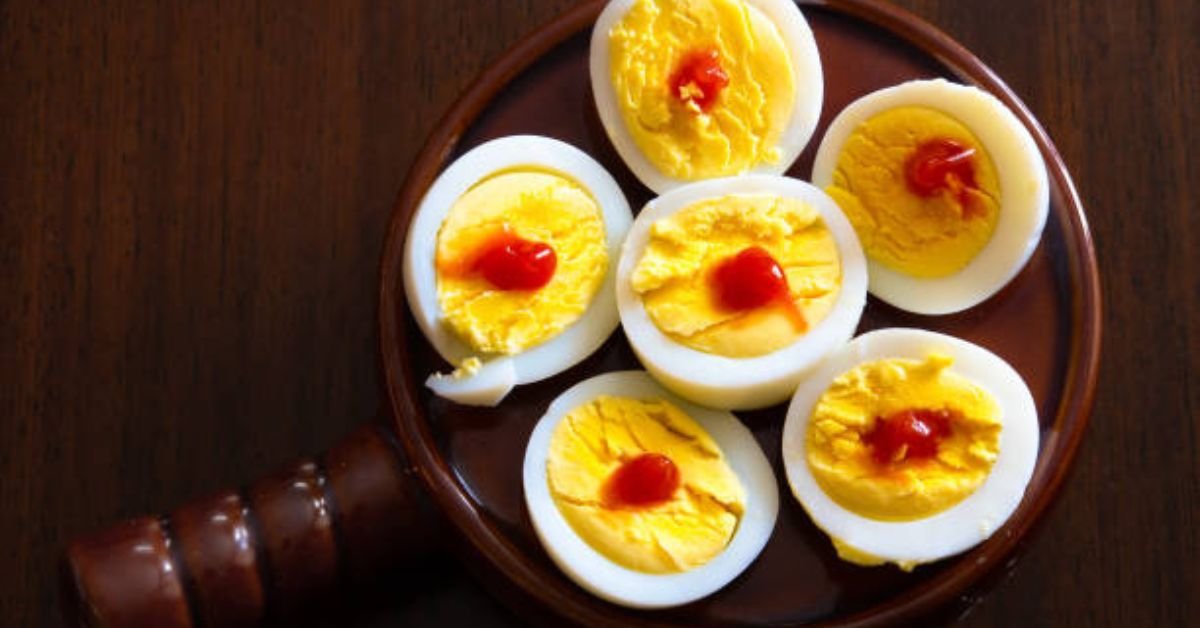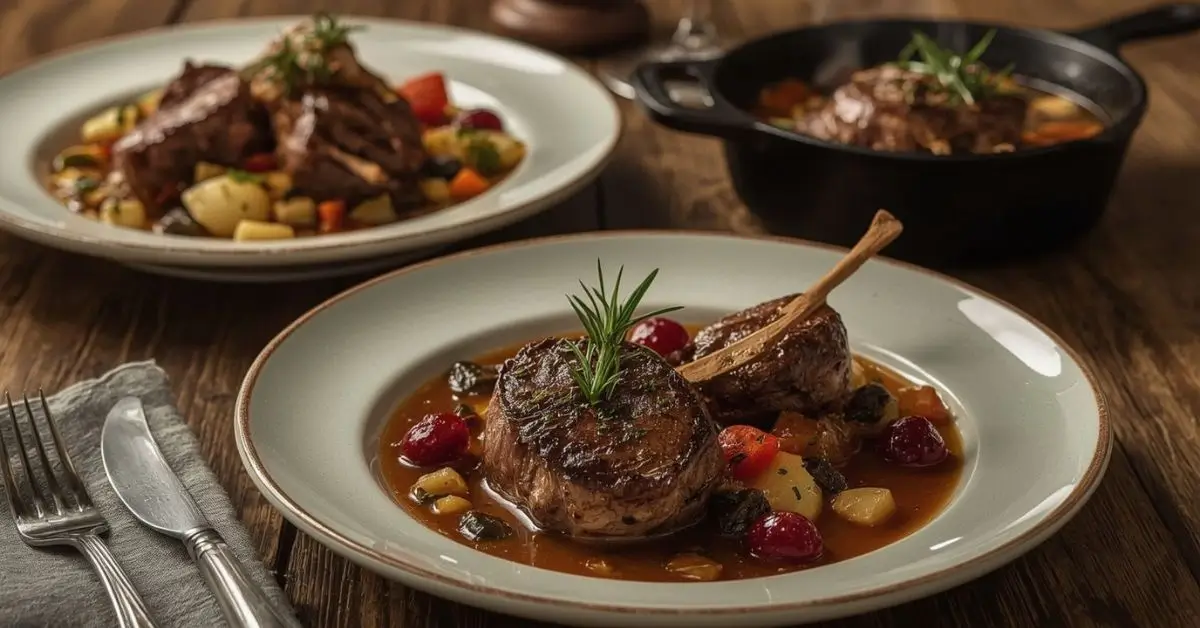FOOD
The Benny Medium: Bridging Realms with Insight and Intuition

Introduction
In an age where science and spirituality often collide, The Benny Medium has emerged as a beacon of clarity, offering people comfort, closure, and a deeper understanding of the unseen world. By serving as a spiritual bridge between the physical and metaphysical, Benny’s work as a psychic medium brings healing to those who seek messages from departed loved ones, guidance from the spirit world, or validation of their own intuitive experiences. With an approach grounded in empathy, intuition, and clairvoyant accuracy, Benny’s presence in the spiritual community has become both respected and sought after.

Understanding the Role of a Spiritual Medium
A spiritual medium acts as a conduit between the living and the spirit world. Unlike general psychics who focus on predicting future events or reading energy fields, mediums communicate directly with spirits. Benny’s mediumship includes clairaudience (hearing messages), clairvoyance (seeing visions), and clairsentience (feeling energy), allowing him to interpret and relay messages from entities beyond the physical realm. His sessions are known for emotional accuracy and the deeply personal details he receives, which many clients say could only come from their loved ones in spirit.
Benny’s Journey: From Intuition to Purpose
Benny’s journey into the realm of mediumship wasn’t something he sought; it was something he accepted. From a young age, he experienced vivid dreams, premonitions, and a strong awareness of energies that others could not perceive. What began as unexplainable sensitivities evolved into a calling when he recognized that his visions had meaning—not only for himself but for others as well. After years of private development and spiritual mentorship, Benny honed his natural intuitive abilities into a professional practice.
He now blends psychic insight with spiritual mediumship to offer holistic readings that touch on emotional healing, life path clarity, and connections to loved ones in the afterlife.
How Mediumship Works in Benny’s Sessions
Each reading with Benny begins with a grounding ritual to set a sacred space. He then taps into the vibrational frequency of the sitter and opens himself to messages from spirit guides, ancestors, or departed souls. Many clients report receiving specific names, phrases, or memories that resonate deeply, affirming that their loved ones are truly present.
In some sessions, Benny integrates energy reading and aura scanning to better understand his clients’ emotional and spiritual state. His ability to discern subtle shifts in energy helps him guide individuals through periods of grief, relationship challenges, or spiritual awakenings.
The Emotional Healing Power of Spirit Communication
Grief can be isolating, but connection can be healing. Benny’s work often serves as a vital emotional intervention for those grieving the loss of a parent, partner, child, or close friend. Receiving messages from the other side can bring profound closure and the comfort of knowing that love transcends the veil of death.
In many cases, clients leave sessions with a renewed sense of purpose or validation of their own spiritual experiences. Whether it’s sensing a familiar presence in a room or dreaming of a deceased loved one, Benny helps people trust their own spiritual awareness and find meaning in the signs around them.

Intuition, Empathy, and Authenticity
What sets Benny apart is not only his accuracy but his integrity. He approaches each session with sincerity, compassion, and humility. In an industry sometimes plagued by skepticism or fraudulent claims, Benny’s transparency and respect for spiritual boundaries have earned him a strong following. He often reminds clients that while mediums provide insight, they do not replace the power of personal choice or professional therapy when needed.
He emphasizes that intuition is not exclusive to mediums—everyone has access to it. Benny encourages individuals to trust their inner voice, develop their intuitive gifts, and remain open to spiritual growth.
The Rise of Spiritual Awareness in the Digital Age
In recent years, spiritual services such as tarot readings, intuitive coaching, and energy healing have surged in popularity. Benny has embraced this shift by offering virtual readings via video platforms, allowing him to connect with clients around the world. Through live Q&A sessions, guided meditations, and online workshops, he fosters a global community of like-minded seekers.
The rise of platforms like YouTube, TikTok, and Instagram has also allowed Benny to share messages of hope, teach spiritual tools, and dispel myths surrounding mediumship and psychic phenomena.
Ethics in Mediumship and Spiritual Practice
One of Benny’s core values is ethical spiritual practice. He does not encourage dependency on psychic readings, nor does he make dramatic predictions designed to instill fear. Instead, his focus is on empowerment, helping clients make informed decisions and navigate life’s challenges with inner strength.
He also respects spiritual consent, choosing not to relay unsolicited messages or read others without permission. These ethical boundaries ensure that his practice remains sacred, respectful, and grounded in spiritual responsibility.
FAQ: Frequently Asked Questions
Q1: What’s the difference between a psychic and a medium?
A psychic taps into a person’s energy to offer insights about their life, while a medium communicates with spirits who have passed on. Benny often blends both modalities in his sessions.
Q2: How accurate are Benny’s readings?
Many clients report astonishingly accurate details—names, events, and messages—that validate their experiences. While no medium is 100% accurate, Benny’s reputation for consistency and emotional truth stands out.
Q3: Can I connect with a specific loved one during a reading?
While Benny sets the intention to connect with particular spirits, he explains that spirit communication is based on energy and readiness. Sometimes unexpected spirits come through with important messages.
Q4: How can I prepare for a session with a medium?
Come with an open heart and mind. Avoid trying to “test” the medium. Reflect on any questions or people you hope to hear from, but trust the process and the flow of spirit communication.
Q5: Is mediumship connected to religion?
Mediumship is spiritual, not religious. While some find comfort within their religious frameworks, Benny’s work transcends doctrine and focuses on universal messages of love, healing, and guidance.
Conclusion
The Benny Medium continues to transform lives by bridging the gap between this world and the next with empathy, intuition, and authenticity. In an era of emotional disconnection and existential questioning, his work offers both clarity and comfort. By guiding people toward understanding their grief, connecting with their intuition, and embracing the unseen world with reverence,

FOOD
Can Dogs Eat Broccoli? A Guide to Safe Snacking

Broccoli is a nutrient-rich vegetable that’s packed with vitamins, minerals, and antioxidants. While it’s a healthy snack for humans, its suitability for dogs is a different story. Broccoli contains a group of compounds called glucosinolates, which can be beneficial for humans but potentially toxic to dogs in large quantities.
Can Dogs Eat Broccoli Raw or Cooked?
So, can dogs eat broccoli raw or cooked? The answer is a bit complicated. While cooked broccoli is generally considered safer for dogs than raw broccoli, it’s still important to exercise caution. Raw broccoli contains more glucosinolates, which can cause gastrointestinal upset in dogs.
The Risks and Benefits of Feeding Broccoli to Dogs
As with any new food, it’s essential to weigh the pros and cons of feeding broccoli to your dog. On the one hand, broccoli is a nutrient-rich snack that can provide health benefits. On the other hand, it can cause adverse reactions in some dogs.

Potential Health Risks
Some dogs may experience adverse reactions to broccoli, including:
- Gastrointestinal upset
- Allergic reactions
- Interference with thyroid function
“I was surprised to learn that broccoli can be toxic to dogs. I always thought it was a healthy snack, but now I’m more cautious about what I feed my furry friend.”
How to Safely Feed Broccoli to Your Dog
If you still want to share broccoli with your dog, here are some tips to follow:
- Start with small amounts to test your dog’s tolerance
- Cook broccoli to reduce glucosinolate content
- Avoid adding seasonings or oils that can be toxic to dogs
FAQs
Q: Is broccoli toxic to dogs?
A: Broccoli contains glucosinolates, which can be toxic to dogs in large quantities.
Q: Can dogs eat broccoli florets?
A: Yes, dogs can eat broccoli florets, but it’s essential to introduce them slowly and in small amounts to prevent adverse reactions.
Q: Is steamed broccoli safe for dogs?
A: Steamed broccoli is generally considered safer for dogs than raw broccoli, as it contains fewer glucosinolates.
Q: Can broccoli cause digestive issues in dogs?
A: Yes, broccoli can cause gastrointestinal upset in some dogs, especially if consumed in large quantities.
Conclusion
Can dogs eat broccoli, it’s clear that this veggie is a bit of a double-edged sword. While it can be a healthy snack for humans, it’s essential to exercise caution when sharing it with your furry friend.
FOOD
Hard-Boiled Eggs: How Long Can You Store Them?

Hard-boiled eggs can be a convenient and healthy snack, but they require proper storage to maintain their quality and safety. When stored in the refrigerator, hard-boiled eggs can last for several days. However, it’s essential to follow proper storage guidelines to prevent bacterial growth and foodborne illness.
The Importance of Refrigeration
Refrigeration is crucial in maintaining the quality and safety of hard-boiled eggs. When stored in the refrigerator, hard-boiled eggs should be kept at a consistent temperature below 40°F (4°C). This will help to slow down bacterial growth and keep the eggs fresh for a longer period.
Factors Affecting the Shelf Life of Hard-Boiled Eggs
Several factors can affect the shelf life of hard-boiled eggs, including:
- Storage conditions: Hard-boiled eggs should be stored in a covered container in the refrigerator to prevent moisture and other contaminants from affecting the eggs.
- Handling: Hard-boiled eggs should be handled carefully to prevent cracking or breaking, which can lead to bacterial contamination.
- Age: The age of the eggs before boiling can also impact their shelf life. Fresh eggs will generally last longer than older eggs.
“I always make a batch of hard-boiled eggs on Sunday evening and keep them in the fridge for quick snacks throughout the week. They’re perfect for grabbing on the go!”

Tips for Extending the Shelf Life of Hard-Boiled Eggs
To extend the shelf life of hard-boiled eggs, consider the following tips:
- Store them in a covered container in the refrigerator.
- Keep them away from strong-smelling foods, as eggs can absorb odors easily.
- Use them within a week for optimal quality and safety.
FAQs
Q: How long are hard-boiled eggs good for in the fridge?
A: Hard-boiled eggs can be stored in the fridge for up to 7-10 days. However, it’s essential to check them regularly for signs of spoilage, such as an off smell or slimy texture.
Q: Can I store hard-boiled eggs at room temperature?
A: No, it’s not recommended to store hard-boiled eggs at room temperature. Bacteria can grow rapidly on perishable foods like eggs when they’re not refrigerated.
Q: How can I tell if a hard-boiled egg has gone bad?
A: Check for signs of spoilage, such as an off smell, slimy texture, or visible mold. If in doubt, it’s best to err on the side of caution and discard the egg.
Q: Can I freeze hard-boiled eggs?
A: Yes, you can freeze hard-boiled eggs, but the texture may change. It’s best to freeze them without the shell and use them in recipes where texture isn’t a concern.
Conclusion
Hard-boiled eggs, it’s clear that proper storage and handling are crucial in maintaining their quality and safety. By following the tips and guidelines outlined in this article, you can enjoy your hard-boiled eggs for a longer period while minimizing the risk of foodborne illness.
FOOD
Best Venison Meals You Can Make at Home

Best Venison meals is one of the most underrated meats. High in protein, low in fat, and filled with micronutrients like zinc and iron, it’s often called the “athlete’s red meat.” In fact, nutritionists now highlight high-protein venison meals as excellent options for muscle recovery and sustained energy.
Unlike factory-farmed beef, venison is often sourced sustainably—either through hunting or specialty farms. That gives it a unique position in the modern food world: delicious, ethical, and healthy.
Venison Dinner Recipes for Every Occasion
Whether you’re preparing a holiday feast or just a Tuesday dinner, venison dinner recipes can be surprisingly versatile. Here are a few standouts:
- Classic Venison Chili: Perfect for chilly evenings, rich in beans, tomatoes, and a slow-cooked game flavor that fills the house.
- Venison Shepherd’s Pie: A twist on comfort food, using venison instead of lamb or beef.
- Pan-Seared Venison Steaks: Quick, elegant, and flavorful when paired with garlic butter.
One home cook shared on social media: “I never thought my kids would prefer deer chili over beef, but now it’s all they ask for.” That’s the power of the right recipe.
Wild Game Meals That Impress
Venison is a staple in many cultures’ wild game meals. In Scandinavia, it’s roasted with root vegetables. In the U.S., hunters prepare venison stews in cast-iron pots over open flames. And in modern kitchens, chefs blend traditional cooking with innovative twists—think venison carpaccio or sous-vide venison tenderloin.
What makes venison stand out? Its earthy, rich taste that pairs beautifully with herbs like rosemary, juniper, and thyme. These natural seasonings balance the meat’s boldness while enhancing depth.
Healthy Venison Dishes
If you’re on a wellness journey, healthy venison dishes might be exactly what you need. Since venison has less fat than beef, it works well for calorie-conscious eaters. Pair it with roasted vegetables, whole grains, or even plant-based sides.
Examples of healthy venison meals:
- Grilled venison medallions with quinoa salad
- Venison lettuce wraps with garlic-lime sauce
- Venison and sweet potato skillet
Not only are these meals nutritious, but they also feel gourmet without being heavy.
Easy Venison Recipes for Beginners
Cooking deer meat doesn’t need to be intimidating. In fact, there are plenty of easy venison recipes that even beginners can master:
- Venison Burgers: Season with salt, pepper, and a touch of Worcestershire sauce.
- Venison Tacos: Quick sauté with onion, chili powder, and cumin.
- Stir-Fried Venison: Thin slices tossed with veggies in soy-ginger sauce.
Tip: Don’t overcook! Venison dries out faster than beef, so medium-rare is often the sweet spot.
Venison Slow Cooker Meals
One of the best tricks for tender, juicy meat is using a slow cooker. Venison slow cooker meals are perfect for busy households.
- Slow-Cooked Venison Stew: With potatoes, carrots, and thick broth.
- Shredded Venison BBQ: A healthier twist on pulled pork sandwiches.
- Venison Curry: Rich spices blend with gamey flavors for a warm, comforting dish.
The low-and-slow method allows connective tissues to break down, leaving the meat fork-tender.
The Best Ways to Cook Venison
So, what are the best ways to cook venison? That depends on the cut:
- Backstrap / Tenderloin → Best grilled, pan-seared, or sous-vide.
- Shoulder / Neck → Excellent for braising or slow cooking.
- Ground Venison → Perfect for burgers, tacos, and chili.
General rule: cook hot and fast for tender cuts, or low and slow for tougher ones.
Venison Comfort Food Classics
There’s something special about venison comfort food. It brings nostalgia and warmth to the table:
- Venison meatloaf with mashed potatoes
- Venison pot roast
- Venison stroganoff with creamy mushroom sauce
Comfort food with venison combines the familiarity of home-style cooking with the excitement of wild game flavors.
Venison Steak Recipes
If you love steak, then venison steak recipes will be your go-to. The key is simplicity:
- Pan-seared with butter and garlic
- Grilled with rosemary and cracked pepper
- Marinated in red wine for 24 hours, then grilled medium-rare
Because venison is lean, it benefits from quick, high-heat cooking to lock in juices.
Deer Meat Recipes Beyond the Basics
Not all deer meat recipes are about steaks and stews. Here are some creative twists:
- Venison jerky for snacks
- Venison breakfast sausage
- Venison lasagna with ricotta and herbs
These dishes show how versatile deer meat can be—from quick bites to full family dinners.
High-Protein Venison Meals
Fitness enthusiasts are turning to high-protein venison meals to fuel workouts and recovery. With nearly 25 grams of protein per serving and less fat than beef, venison is a powerhouse.
Great options include:
- Venison stir-fry with broccoli and cashews
- Venison egg scramble for breakfast
- Venison chili with extra beans for post-workout fuel
Athletes often say that venison leaves them energized without feeling heavy.
Pro Tips for Cooking Venison
- Marinate wisely: Acidic marinades (like red wine or balsamic vinegar) tenderize the meat and reduce gamey flavors.
- Don’t overcook: Medium-rare to medium keeps venison juicy.
- Pair with bold flavors: Mushrooms, garlic, and juniper berries balance venison beautifully.
- Rest the meat: Like beef, resting helps redistribute juices.
FAQ’s
What are the best venison meals for beginners?
Easy venison recipes like burgers, tacos, and stir-fry are beginner-friendly. They use ground meat, which cooks quickly and has mild flavor.
How do you make venison taste less gamey?
Marinate with red wine, garlic, or citrus. Pairing venison with bold flavors also helps balance the gamey taste.
Can venison be cooked in a slow cooker?
Yes, tougher cuts like shoulder or shank are perfect for venison slow cooker meals. They become tender and flavorful after long cooking times.
Is venison healthier than beef?
Yes, venison is leaner, lower in cholesterol, and higher in protein. That makes it ideal for those seeking healthy venison dishes.
Final Thoughts
The best venison meals blend tradition, nutrition, and flavor. From venison steak recipes to comfort food classics, venison proves it’s more than just wild game—it’s a versatile, delicious, and healthy option for any table. Whether you’re cooking a quick weeknight dinner, a hearty chili, or a gourmet feast, venison has a place in your kitchen.
-

 TECH6 months ago
TECH6 months agoApple iPhone 17: Official 2025 Release Date Revealed
-

 BLOG6 months ago
BLOG6 months agoUnderstanding the ∴ Symbol in Math
-

 EDUCATION6 months ago
EDUCATION6 months agoHorizontal Translation: How to Shift Graphs
-

 EDUCATION6 months ago
EDUCATION6 months agoUsing the Quadratic Formula
-

 EDUCATION6 months ago
EDUCATION6 months agoThe Meaning of an Open Circle in Math Explained
-

 HEALTH6 months ago
HEALTH6 months agoGoodNever: Wellness, Simplified
-

 EDUCATION6 months ago
EDUCATION6 months agoWhy Does m Represent Slope?
-

 EDUCATION6 months ago
EDUCATION6 months agoHow to Solve Quadratic Equations 2